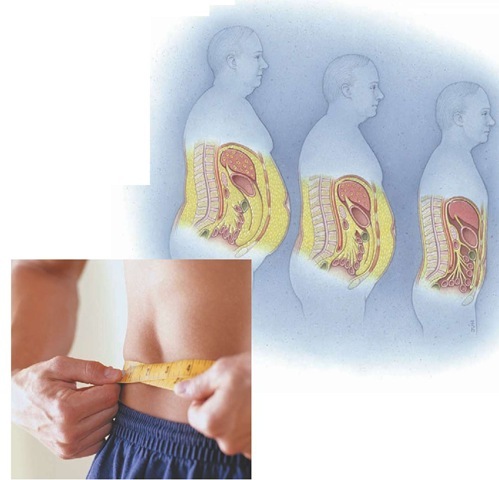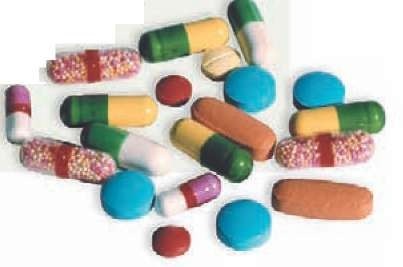Knowing what nutrients comprise a well-balanced diet, in what foods to find them, and in what quantities to eat them are some of the first steps to good health. Applying this knowledge by eating nutrient-rich foods and incorporating physical activity into your schedule at any stage of life are the greatest investments you can make in sustaining good health.
Although healthful eating may lower your risk for certain diseases, there are no guarantees that adhering to the tenets of good nutrition will prevent an illness from developing. Science has shown that not all diseases or disorders are associated with what you eat. However, statistics do show that lifelong food selections may influence the risk for some diseases.
Research continues to evaluate and clarify the role that diet and nutrition play in the promotion of health and in the development of obesity, high blood pressure, diabetes mellitus, coronary artery disease, osteoporosis, cancer, and other illnesses. The nutritional recommendations for prevention of many diseases are similar.
In this topic you will learn about selected conditions in which nutrition plays an important role and how proper nutrition may affect and even alter the course of these conditions.
If obesity were merely a matter of aesthetics, it would be of less concern. But obesity is a health issue. It is associated with an increased risk of diabetes, lipid abnormalities, coronary artery disease, high blood pressure, certain cancers (such as breast, colon, and gallbladder in women and colon nd prostate in men), stroke, degenerative arthritis, respiratory problems, sleep disturbances, and gallbladder disease.
Obesity places a huge burden on society in terms of lost lives, ongoing illnesses, emotional pain, iscrimination, and economic cost (nearly $100 illion annually). The most ominous burdens posed by being overweight are reduction of the quality of life and ‘lortening of life span. The likelihood of dying early (compared with the average age at death of all people in the population) progressively increases the more overweight you are. Diseases caused by obesity are the second leading cause of preventable deaths n the United States.
The Battle of the Bulge
With countless diet programs and products promising to help you shed pounds, losing weight should be easy. Simply eating too much and not being active enough are the causes of most overweight problems. But you also know it is hard to lose weight and even harder to keep it off. The cause of overweight and obesity is a chronic imbalance of calories ingested and calories burned. Genetic and environmental factors also contribute to obesity.
Americans spend more than $33 billion a year on weight-loss products and services, but they are losing the "battle of the bulge." Despite the great desire of Americans to be thinner, they have become more obese. Some have even declared that the United States has an "obesity epidemic." It is estimated that more than 50 percent of adult Americans are overweight. The prevalence of obesity also is increasing in several other countries.
Get the Terms Straight
"Overweight" and "obesity" are terms that often are used interchangeably, but they have different meanings. "Overweight" refers to having excess body weight compared with the norm for a person’s height, but the term does not account for what tissue is making up the weight. For example, athletes are often overweight according to weight-for-height tables because they have increased muscle mass. However, for most people, overweight means having too much fat.
"Obesity" refers to body fat in excess of what is healthful for an individual. In healthy women, an acceptable level of body fat ranges from 25 to 35 percent. In contrast, an acceptable range of body fat in men is from 10 to 23 percent.
How Your Body Uses Food
The number of calories used by an individual is determined by three factors: basal metabolic rate, the thermic effect of the food eaten, and the calories used during physical activity. The basal metabolic rate is the amount of energy needed to maintain bodily functions when an individual is at rest. This component accounts for 60 to 75 percent of the daily calorie requirement in sedentary adults. The major determinant of the basal metabolic rate is the amount of fat-free mass in the body. Muscle is one example of fat-free mass. Resistance (strength) training can increase the amount of muscle and therefore increase the basal metabolic rate. Resistance training also can help prevent the loss of lean mass that normally occurs with aging. Men tend to have more muscle than women and therefore burn more calories.
The thermic effect of food is the energy required to digest, metabolize, and store nutrients. The thermic effect of food accounts for about 10 percent of the total daily calorie use. The number of calories burned during exercise can vary tremendously depending on the amount of exercise performed. For most so-called sedentary persons, the activities of daily living (such as walking, talking, and sitting) account for 15 to 20 percent of the daily calorie use.
Should You Lose Weight?
How do you determine whether you are overweight or obese? Scientists can use sophisticated tests to measure body composition. However, these are not necessary for most individuals. You can measure your change in weight over time. Alternatively, you can calculate your body mass index (BMI) and determine its relationship to health risks.
Pinpointing Your Risk
There are risk factors that indicate a predisposition for obesity. Among these risk factors are the following:
Body mass index (BMI)—BMI is defined as your weight (in kilograms) divided by the square of your height (in meters). Simpler still, look it up in the Body Mass Index Table on page 49. The advantage of BMI over bathroom scales and weight-for-height tables is that it normalizes weight for height and helps determine whether you have a healthful or unhealthful percentage of total body fat.
People who should not use the BMI for determining health risks include competitive athletes and body builders. Their BMI will be high because they have a larger amount of muscle. BMI is also not predictive of health risks for growing children, women who are pregnant or lactating, and frail, sedentary older adults.
A BMI from 19 to 24.9 is associated with a minimal to low health risk. A BMI from 25 to 29.9 is considered overweight and is associated with moderate health risks. A BMI of 30 or higher is considered obese and is associated with a substantially greater risk for development of various diseases. Extreme obesity is a BMI of more than 40.
Body shape—Increasing attention has been focused on the distribution of body fat as a potential indicator of health risk. Specifically, excess fat in the abdomen is associated with an increased risk for development of various metabolic illnesses, including diabetes mellitus, increased blood lipid levels, and high blood pressure. In contrast, associated with increased health risks, especially if you have a BMI of 25 or more.
Body Mass Index Table*
To use the table, find your height in the left-hand column. Move across to find your weight. The number at the top of the column is your BMI.
|
|
Healthy |
|
Overweight |
|
|
|
|
Obese |
|
|
||
|
BMI |
19 |
24 |
25 |
26 |
27 |
28 |
29 |
30 |
35 |
40 |
45 |
50 |
|
Height |
|
Body weight (pounds) |
||||||||||
|
4’10" |
91 |
115 |
119 |
124 |
129 |
134 |
138 |
143 |
167 |
191 |
215 |
239 |
|
4’11" |
94 |
119 |
124 |
128 |
133 |
138 |
143 |
148 |
173 |
198 |
222 |
247 |
|
5’0" |
97 |
123 |
128 |
133 |
138 |
143 |
148 |
153 |
179 |
204 |
230 |
255 |
|
5’1" |
100 |
127 |
132 |
137 |
143 |
148 |
153 |
158 |
185 |
211 |
238 |
264 |
|
5’2" |
104 |
131 |
136 |
142 |
147 |
153 |
158 |
164 |
191 |
218 |
246 |
273 |
|
5’3" |
107 |
135 |
141 |
146 |
152 |
158 |
163 |
169 |
197 |
225 |
254 |
282 |
|
5’4" |
110 |
140 |
145 |
151 |
157 |
163 |
169 |
174 |
204 |
232 |
262 |
291 |
|
5’5" |
114 |
144 |
150 |
156 |
162 |
168 |
174 |
180 |
210 |
240 |
270 |
300 |
|
5’6" |
118 |
148 |
155 |
161 |
167 |
173 |
179 |
186 |
216 |
247 |
278 |
309 |
|
5’7" |
121 |
153 |
159 |
166 |
172 |
178 |
185 |
191 |
223 |
255 |
287 |
319 |
|
5’8" |
125 |
158 |
164 |
171 |
177 |
184 |
190 |
197 |
230 |
262 |
295 |
328 |
|
5’9" |
128 |
162 |
169 |
176 |
182 |
189 |
196 |
203 |
236 |
270 |
304 |
338 |
|
5’10" |
132 |
167 |
174 |
181 |
188 |
195 |
202 |
209 |
243 |
278 |
313 |
348 |
|
5’11" |
136 |
172 |
179 |
186 |
193 |
200 |
208 |
215 |
250 |
286 |
322 |
358 |
|
6’0" |
140 |
177 |
184 |
191 |
199 |
206 |
213 |
221 |
258 |
294 |
331 |
368 |
|
6’1" |
144 |
182 |
189 |
197 |
204 |
212 |
219 |
227 |
265 |
302 |
340 |
378 |
|
6’2" |
148 |
186 |
194 |
202 |
210 |
218 |
225 |
233 |
272 |
311 |
350 |
389 |
|
6’3" |
152 |
192 |
200 |
208 |
216 |
224 |
232 |
240 |
279 |
319 |
359 |
399 |
|
6’4" |
156 |
197 |
205 |
213 |
221 |
230 |
238 |
246 |
287 |
328 |
369 |
410 |
The body has a nearly unlimited capacity to store fat. Excess fat in the abdomen can lead to illnesses, including diabetes, high blood lipid levels, and high blood pressure. It is also associated with an increased risk for coronary artery disease, stroke, and certain cancers. Losing weight will reduce these risks and lessen the strain on the lower back, hips, and knees.
Measuring your waist circumference can be helpful to determine how your body distributes fat. Fat in your abdomen increases your risk for high blood pressure, coronary artery disease, diabetes, stroke, and certain cancers.
Therefore, it can be helpful to assess your health risk by measuring your waist circumference. A measurement of more than 35 inches in women and 40 inches in men is associated with increased health risks, especially if you have a BMI of 25 or more.
What Is There to Lose? To Gain?
Although no one is without health risk—even the fittest person can have a heart attack, diabetes, or cancer—health and well-being are apt to be in less jeopardy if BMI, body shape, and family health history do not indicate problems. However, if your BMI is 25 or more, if your fat is primarily located in your upper body, and if you have a personal or family history of diabetes, heart disease, high blood pressure, or sleep apnea, losing weight can greatly improve your health.
Keep in mind that BMI and waist circumference are just starting points. Other factors also are important. When in doubt, seek a medical evaluation by your physician. A thorough history, examination, and blood studies can clarify whether your weight is having adverse effects on your health. The appropriate plan of action then can be tailored to meet your individual needs.
Getting Started
Losing body fat and keeping it off are not easy. Losing weight and then maintaining a healthful weight require collaboration with knowledgeable health care professionals. Obesity is not only a medical issue but also is a lifestyle issue. Your habits can help you maintain a desirable body weight or they can hamper your efforts to lose weight or even cause you to gain further weight. The types and amounts of food you eat and the exercise you perform will determine whether you gain, lose, or maintain your weight. Therefore, experts recommend that any weight loss program should consist of three main components: nutrition, exercise (or activity), and behavior modification. (See sidebars: Weight Management Programs: Look for These Criteria, and Special Situations, this page.)
Nutrition
Liquid meals, over-the-counter diet pills, and special combinations of foods promising to "burn" fat are not the answers to long-term weight control and better health. Learning to eat differently—to enjoy a well-balanced diet offewer calories— is the best strategy to achieve health and weight goals. You should begin by substituting the words "healthful nutrition program" for "diet."
Most people try to lose weight by eating 1,000 to 1,500 calories a day. In many instances, eating fewer than 1,400 calories makes it difficult to eat a balanced diet containing the recommended levels of nutrients. Therefore, nutrition programs that are too low in calories may be hazardous to your health.
You can lose weight by eating fewer calories or by increasing exercise. A caloric deficit of 3,500 calories is required to lose 1 pound of fat. Over 7 days, this can be achieved by cutting 500 calories each day from your usual food intake or by cutting 250 calories each day (such as one or two fewer cookies) and burning an additional 250 calories with exercise (such as by walking briskly for 30 minutes). The good news is that a relatively small loss of weight can make a big difference in reducing the risk of health complications from obesity. Even a 10 percent weight loss can lead to improvement in your blood sugar level, lipid values, and blood pressure. Once this degree of weight loss has been achieved, further weight loss goals can then be set, if needed. Rather than aiming for an "ideal" weight, which may not be achievable or desirable, focus on achieving and maintaining a healthful weight.
Weight Management Programs: Look for These Criteria
Nearly 8 million Americans enroll in some kind of structured weight-loss program each year. Choose a safe and helpful program that meets these criteria.
• Physician participation—Consult a doctor if you have a health problem or it is necessary to lose more than 15 to 20 pounds.
• Qualified staff—Registered dietitians can design a nutrition plan. Specialists in behavior modification and exercise are also recommended.
• Nutritionally balanced diet—Any weight management plan should ensure adequate nutrition.
• Exercise—At a minimum, there should be instructions for starting a safe exercise program.
• Reasonable weight loss goals—Weight loss should be slow and steady. A 1- to 2-pound weight loss per week is a good start. A loss of 10 percent of starting weight is also a reasonable initial goal.
• Help in changing lifestyle—Programs should help improve life-long eating and exercise habits. There should be opportunity for follow-up support—even after goals are reached.
Special Situations
• The only way to lose weight and keep weight off is to combine a healthful nutrition program ("diet") with regular physical activity. Prescription medications for weight loss may be considered in moderately overweight or obese people with weight-related health problems. Use of these medications does not eliminate the need for healthful nutrition and activity or behavior modification strategies. Medical supervision is essential because there are potential risks, in addition to benefits.
• Weight-loss surgery may be considered only in clinically severe obesity (BMI of more than 35) with weight-related medical problems or in extreme obesity (BMI more than 40).
• Over-the-counter diet products are a huge financial success. Many of them promise to help you lose weight by increasing your metabolism or decreasing ou appetite. However, these effects can be dangerous, and any weight loss isalmost always temporary.
A healthful diet for controlling weight includes foods from all food groups in the Food Guide Pyramid—ensuring balance and variety—in sensible amounts.It is helpful to review the energy density of the food consumed. Fat contains 9 calories/gram, protein 4 calories/gram, and carbohydrates 4 calories/gram. Alcohol contributes 7 calories/gram.
Low-Fat Is Not Necessarily Low-Calorie
|
Food (amount) |
Calories |
Fat (grams) |
|
Cookie (1 cookie) |
|
|
|
Chocolate chip |
|
|
|
Regular |
80 |
4.5 |
|
Reduced-fat |
70 |
3 |
|
Sandwich-type |
|
|
|
Regular |
50 |
2 |
|
Reduced-fat |
55 |
1.5 |
|
Crackers |
|
|
|
Soda (5 crackers) |
|
|
|
Regular |
60 |
2 |
|
Fat-free |
50 |
0 |
|
Wheat (15 crackers) |
|
|
|
Regular |
130 |
6 |
|
Fat-free |
180 |
0 |
|
Ice cream (1/2 cup) |
|
|
|
Regular |
135 |
7 |
|
Low-fat |
120 |
2 |
|
Potato chips |
|
|
|
(1 ounce or 1 individual bag) |
|
|
|
Regular |
150 |
10 |
|
Reduced-fat |
135 |
6 |
|
Pretzels |
|
|
|
(1 ounce or 1 individual bag) |
|
|
|
Regular |
110 |
1 |
|
Fat-free |
110 |
0 |
For most people, the volume of food consumed determines how full you feel. Therefore, eating a small amount of an energy-dense food (such as fat) is usually not filling, whereas eating a large enough amount to fill you up results in a very large calorie intake. To lose weight, decrease your total calories by cutting back on the fat while filling up on low-calorie high-nutrient foods such as vegetables, fruits, and grains. You also can eat lower-fat versions of foods. However, be careful, because low-fat is not always low-calorie (see sidebar: Low-Fat Is Not Necessarily Low-Calorie, this page).
Healthful eating habits also avoid the feast or famine phenomenon. Distributing food selections throughout the day provides nourishment to support daily activities and can help to eliminate energy highs and lows. Three meals and occasional snacks also keep one’s appetite in check.
It is also important to avoid the hazards of repeatedly losing and gaining weight. Although repeated dieting is still a matter of debate, some studies suggest that it may lower the rate at which calories are burned. When a person is off the diet and more food is eaten, the body stores fat faster and more efficiently. This effect causes regain of the lost weight. In this circumstance, the amount of weight regained often is more than that lost in the first place.
Physical Activity
Improved eating habits in combination with decreased calorie intake and calorie-burning exercise is the best way to lose weight and maintain the results. In addition to enhancing weight loss efforts, physical activity promotes loss of body fat, increases muscle mass, and increases cardiovascular fitness. Regular exercise not only helps you lose weight by increasing the number of calories you burn but also makes it easier to keep off the weight that you have already lost.
Walking is a good choice for getting started on an exercise plan. A daily 2-mile walk burns approximately 1,000 to 1,200 calories per week. In addition, do not discount the physical activity that is part of ordinary activities of daily living—housework, climbing stairs, gardening— all important forms of exercise that can contribute to weight loss. It may be easier to maintain a schedule if you exercise with a friend.
Many experts recommend that you also participate in resistance (or strength) training. Resistance training can increase your muscle mass (which, as discussed previously, increases your basal metabolic rate), your bone density (which can help protect against osteoporosis), and your balance and coordination (which can lower the risk of injury), and it can help improve your posture.
People who are overweight, have been inactive, or have medical problems should check with their physician before starting an exercise program. An exercise stress test may be helpful because it can measure the response of the heart to exercise and help establish a safe starting level.
Behavior Modification
Behavior modification programs help identify triggers and treatments for unhealthful eating habits—such as uncontrolled snacking or late night eating. Such programs often explore the reasons behind an inactive lifestyle. Food diaries and activity logs frequently are used to heighten your awareness of what and how much is eaten and the type and amount of exercise done daily. These journals often provide insight into what triggers undesirable eating and what can be done to avoid or change this behavior.
Other key behavioral elements needed for success include:
Commitment—There must be personal motivation to change—to eat healthfully and to get regular physical activity.
Priorities—It takes significant mental and physical energy to change deeply ingrained habits. If other major issues or life stresses are present, it is important to seek help for dealing with them. When balance in life is regained, you can focus on healthful nutrition more effectively.
Realistic goals—The best goals are those that can be achieved. Set daily or weekly goals that allow progress to be measured and rewarded. Aim to lose about 1 to 2 pounds weekly. It is important to know that small losses of weight— or improvements in physical activity—can improve health. Measurements of blood pressure, blood sugar level, and blood cholesterol and triglyceride values are more important in terms of health than the number on the scale. Accept the fact that there will be setbacks. Instead of becoming frustrated or angry, resume your health program once again.
Group support—Joining with people facing the same challenges can promote sharing of ideas and facilitate commitment.
Physical activity enhances weight loss efforts by promoting loss of body fat, increasing muscle mass, and increasing cardiovascular fitness.




